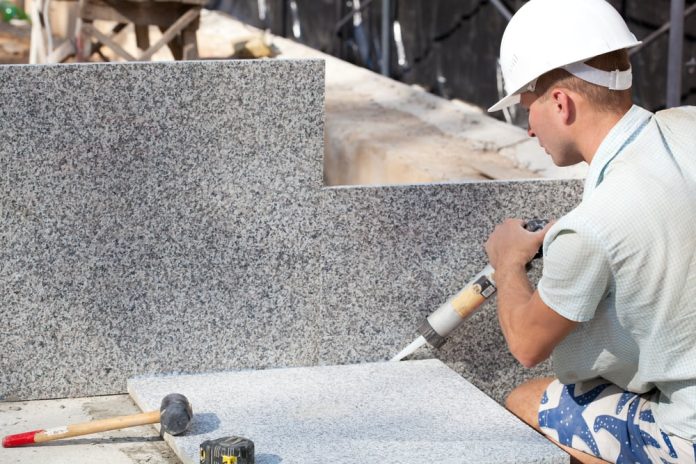What are the different types of sealants and what should they be used for?
Sealant is a material used in a plethora of DIY projects, but as there are so many different types available it can be confusing to inexperienced DIY-ers. People occasionally get sealant and adhesives confused too, with sealants meant to be used to close gaps between materials compared to adhesives attaching them together. Although some sealants can be used in the same way as adhesives, they generally do not keep things stuck together and are designed to shrink to create tight seals. Below is a list of all of the various types of sealant that you may come across, and what each one is best suited for.
Acoustic
Acoustic sealant is used to prevent noise from filtering through gaps in building material. It is different to regular caulk in that it remains soft and flexible to help absorb sound, and is therefore often used in soundproofing. It can also create a barrier against moisture and vapours, as well as absorb vibrations to lessen noise.
Adhesive
Adhesive sealant is not as strong compared to traditional adhesives, but it is still ideal for applications that require glueing and sealing simultaneously, such as skirting boards.
Butyl
Butyl sealant is normally rubber-based, but sticks well to a variety of materials. Unlike other sealants, it does not need to cure, making it flexible and able to resist UV, moisture and ageing. Although it is water-resistant, it is prone to tearing when moving around and cannot be painted over. It can also be stringy and has a runny consistency, which can make application messy.
Elastic
Elastic sealant is rubbery and applied in thick layers, which are used to fill in or seal up large areas. Although the sealant will dry hard, it will maintain its flexibility so that it can expand between surfaces to create a watertight barrier.
Floor
Unlike other sealants, this is not a foam or paste, but a thin, clear layer that can be applied to flooring surfaces. If your home has porous flooring, you will need a layer of floor sealant to provide a barrier to protect from stains, bacteria, moisture and other signs of wear. However, there are many different types that will depend on what kind of flooring you have, so ensure you have checked the label to see if it is appropriate.
Foam
Foam sealant is used in homes or places where there are large gaps and cracks to form a barrier against air escaping. It is easy to apply, and is sprayed on in thick layers with a spray can. This type of sealant will expand after application so that it can cover a wider area. Various brands will have different expansion rates, so it is vital that the sealant is given adequate time to dry before being trimmed back.
Latex
Latex sealants are water based, probably being the most versatile and popular type used in DIY. They have a lot less odour than other sealants, few volatile organic compounds (VOCs), and it can also be painted over. It is also much cheaper than most other kinds of sealant, and adheres to the majority of common building materials. Another benefit is that it can be cleaned up with soap and water instead of chemical solvents. However, when compared to other sealants, it is only moderately water resistant and requires up to seventy two hours to properly cure.
Patio
Patio sealant is similar to floor sealant, except it is formulated to withstand harsh outdoor conditions. It penetrates into the surface of a patio to lessen the growth of bacteria and prevent damage caused by moisture during freeze and thaw cycles. If you are experienced at DIY you will likely be able to apply this yourself, but most people will find it beneficial to hire a professional to do this for them.
Polyurethane
Polyurethane sealant is tough, and known for its resistance to abrasion. Once this kind of sealant has dried, it produces a hard-wearing elastic seal that is suitable to be used for stone, plastic, rubber, wood and metals. However, due to its high performance, polyurethane may be hard to apply correctly and can also be expensive.
Silicone
Silicone sealants are able to withstand temperature changes, will not fade from UV exposure and can remain flexible for a long time. They are completely waterproof, whereas most other sealants are only water-resistant or watertight. As a result, in the home they can be used for applications involving sinks, baths, showers and window frames. However, their performance and versatility mean that they are often expensive. Silicone sealant also has a strong smell that can be unappealing, and they are not suitable for being painted over.
Stone and Tile
If you have natural stone in your home, like granite or marble, this will have a porous surface because of the mineral micro-channels present within the stone, which is also an issue with most types of tile. This makes it prone to staining and bacteria can thrive in this kind of environment, which means that applying a proper stone or tile sealant is essential. Similar to floor and patio sealant, stone or tile sealant will provide a protective barrier to preserve the material and help to keep it clean.
Urethane
Urethane sealant has most of the same strengths as silicone, but unlike silicone sealant it can actually be painted. They are best used for projects where you need a strong resistance to tearing or a minimal amount of shrinking that most sealant is prone to. However, urethane will need a lot of curing time and may not always work well on certain types of plastic. It can be difficult to wash off skin, and painting this kind of sealant is a requirement as it will degrade when exposed to UV light.
When applying sealant, always wear gloves and goggles to protect yourself. Application should take place in a well ventilated area due to the potential build up of vapours in the air, which should not be inhaled if possible. For easy application, use a sealant gun that will hold the sealant cartridge for you, before using a wet finger or silicone smoother to smooth the sealant and get rid of any excess. It is important to remember that although the sealant may be dry to the touch fairly quickly, it should be left to cure for the correct amount of time according to the manufacturer’s instructions.






